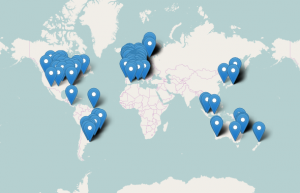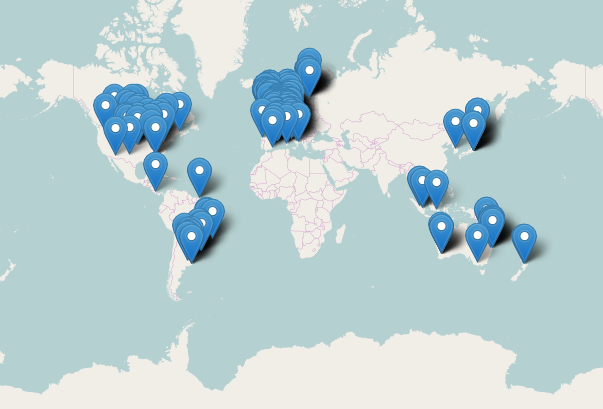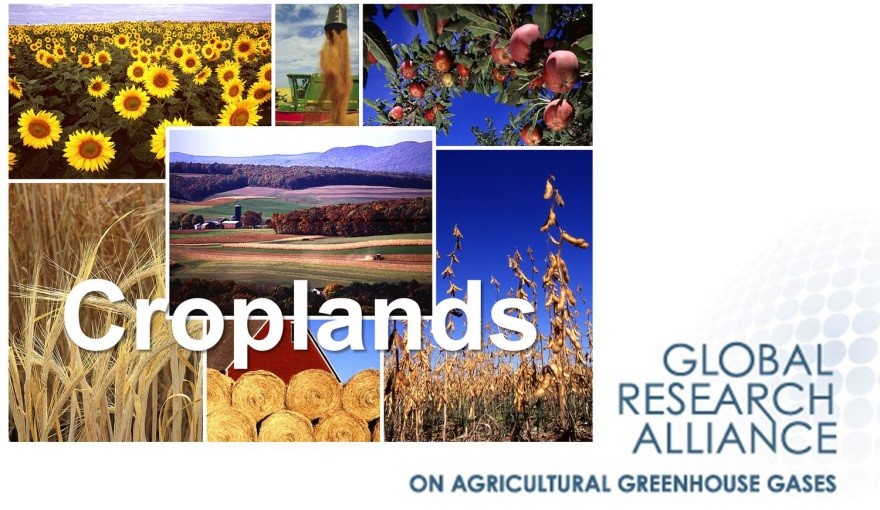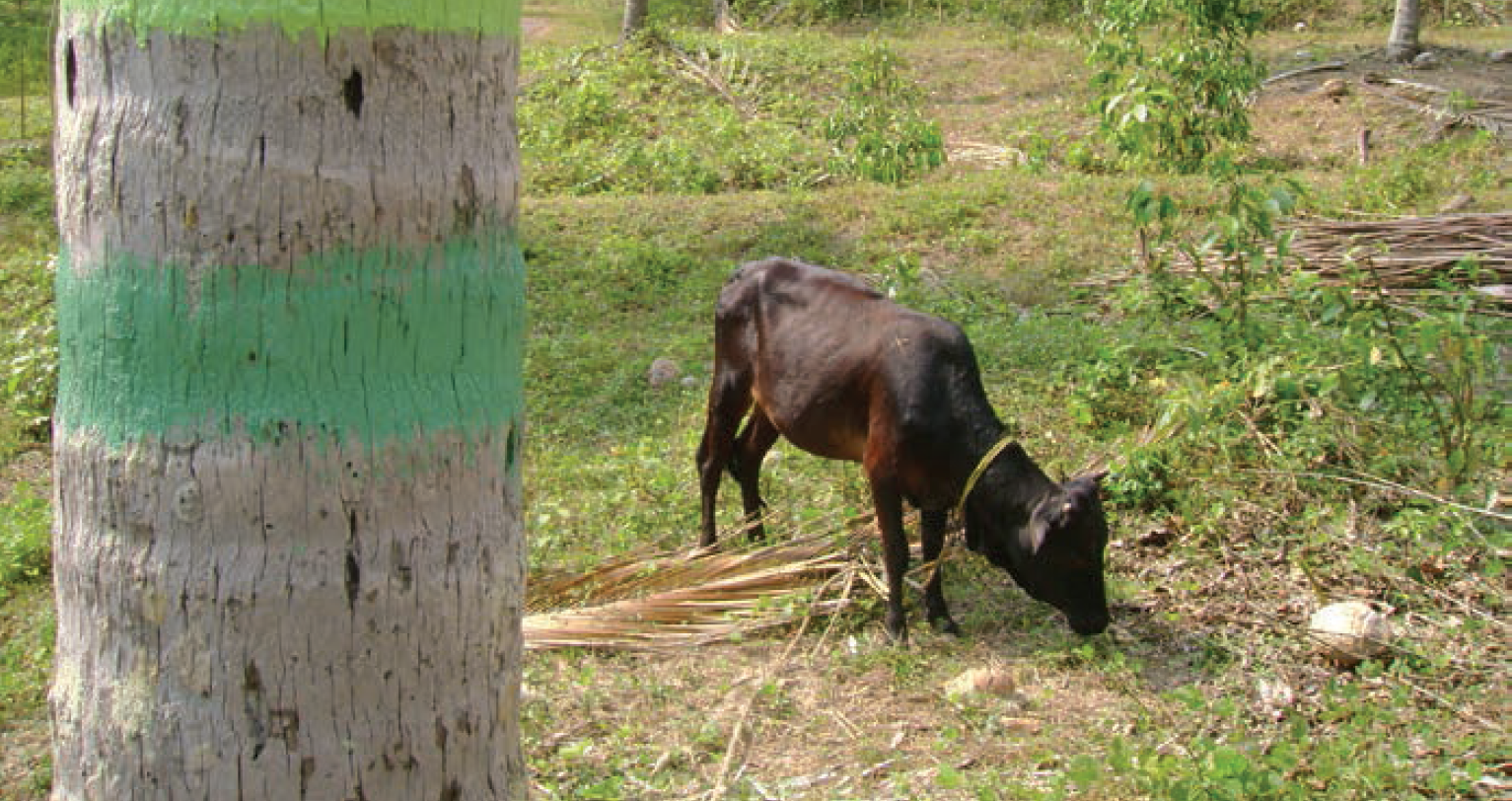The GRA is working in Partnership with the CGIAR Research Program on Climate Change, Agriculture and Food Security (CCAFS), the Food and Agriculture Organization of the United Nations (FAO), and other experts to identify cost-effective and technically sound measurement, reporting, and verification (MRV) systems – and the guidance, tools, and platforms that support them.
At a side event during the 2018 Bonn Climate Change Conference, experts from Brazil, Guatemala, and Uruguay shared their experiences developing MRV systems for livestock NAMA projects at the local level and elaborated on how this information could inform NAMAs and Nationally Determined Contributions (NDCs) going forward.
Four themes arose from presentations and discussion with the audience:
(1) Standardized approaches are needed at subnational/project and national MRV levels to enable the two systems to “talk” to each other.
(2) Protocols and technologies for information collection apps, data compilation and access via platforms were essential components of MRV systems and can help with aggregation, standardization, and quality control.
(3) MRV should build on national livestock information systems and seek to improve these to provide robust activity data.
(4) Capacity development at subnational levels should be a priority.
Read the report here in English, French and Spanish.
The Special Section ‘Frontline research in mitigating greenhouse gas emissions from paddy fields’, which contains 10 original papers, has been published online by the Soil Science and Plant Nutrition (SSPN), in association with the GRA’s Paddy Rice Group, Partners and Affiliates.
Preface:
Paddy fields are recognized to be a major anthropogenic source of atmospheric methane (CH4), a potent greenhouse gas with a relatively short lifetime in the atmosphere. Like other biogenic sources, CH4 is produced by the activity of CH4-producing archaea, or methanogens, as one of the terminal products in the anaerobic food web in flooded soils. Due to the large amount of CH4 emitted globally from paddy fields, mitigation of emissions from this source is very important in order to stabilize its atmospheric concentration. In addition, because of the possibility of controlling these emissions by agronomic practices, such as management of water, fertilizer, and organic matter, paddy fields appear to be one of the most promising sources for mitigating CH4 emissions.
The mechanisms and factors controlling CH4 production in flooded soils were systematically elucidated almost 50 years ago, mainly by laboratory experiments. Field measurements of the emissions from paddy fields have been conducted at various locations of the world since the early 1980s. Compilation of these data provided the emission and scaling factors for CH4 from rice cultivation in the 2006 IPCC Guidelines for National Greenhouse Gas Inventories. Trade-offs and synergies of mitigating CH4 emissions with N2O emissions or rice production have also been studied. As a result, an array of options that mitigate greenhouse gas emissions from paddy fields has now been proposed and demonstrated by field experiments.
However, there is a strong social need, as the next step of research advancement, to develop implementation strategies for extending the options successfully to local farmers and communities. Because the systems of rice cultivation are widely diverse depending on climate, social, and economic conditions, the options often need to be developed in accordance with those regional conditions. Also, it is necessary to improve the sharing of knowledge of the mitigation options among researchers and other stakeholders, such as policy makers and land users, in different regions of the world. These endeavors are particularly crucial to set up nationally appropriate mitigation actions for rice producing countries, in order to undertake ambitious efforts to combat climate change and meet the 2016 Paris Agreement on Climate Change.
This special section, ‘Frontline research in mitigating greenhouse gas emissions from paddy fields’, has been proposed to address the current research needs. Research papers on the issue were collected through the framework of the Paddy Rice Research Group of the Global Research Alliance on Agricultural Greenhouse Gases (GRA).
The Conservation Agriculture Network of our Croplands Research Group. led by Canada, has produced a new brochure of their work.
The brochure explains how conservation agriculture can mitigate greenhouse gas emissions and enhance soil carbon storage in croplands.
The Global Research Alliance has updated its website to include individual pages for the Networks associated with each Research Group. We’ve also freshened up the visuals on the site, created a searchable library, and made space for special highlights of our work. Sample the Livestock Research Group page
In southern Sri Lanka, smallholder farmers grazing their cattle on local coconut plantations have achieved significant improvements in both livestock and coconut productivity by supplementing with Gliricidia sepium and low-cost concentrates, and through strategic manure management.
For three years, the farmers supplemented their cattle’s natural herbage fodder with a high-protein tree fodder crop (G. sepium), a cheap protein source rich in vitamins and minerals; and a low-cost concentrate (comprising urea, rice bran, molasses and minerals). They also restricted the lengths of tethered ropes for grazing, incorporating more dung and urine to the manure circle of the coconut palm; and deposited fallen fronds, coconut husks etc inside the manure circle to promote nutrient recycling.
The impact on animal productivity has been significant, with cows nearly 10% heavier at calving, the first calving age dropping by around 17%, the average birth weight of calves increasing by 13%, and milk yield increasing by up to 47%. Nut and copra yields almost doubled.
These outcomes indicate real potential for improving long-term food security and other environmental gains in the region.
Improved ruminant genetics increase animals’ resilience to climate-related stresses, increases reproductive performance, and – in some countries – could achieve emission reductions of 11-26% per unit of product, according to a new practice brief written by scientists from the Global Research Alliance’s Livestock Research Group and the CCAFS low emissions agriculture flagship. This brief is part of the CSA practice brief series of the Global Alliance for Climate Smart Agriculture (GACSA) Knowledge Action Group.
The brief summarises the state of the science in this area and provides implementation guidance for policymakers and investors. It describes how animal breeding can increase livestock productivity and resilience to climate change, while also reducing greenhouse gas emissions intensity. It focuses on opportunities in developing countries, where the majority of the world’s ruminant populations can be found.
More details on the practice brief can be found in a joint LRG/CCAFS blog post here. You can also download the practice brief here.
Researchers show how improved greenhouse gas inventories for the livestock sector meet international requirements, support climate change and productivity goals and help broaden countries’ policy options.
For media interviews and enquiries please contact:
Andy Reisinger / +64 21 613 125 / [email protected]
Julianna White / +1.802.777.7017 / [email protected]
WELLINGTON, NEW ZEALAND // BURLINGTON, USA (23 August 2016) – Scientists say that using advanced greenhouse gas inventory and accounting methods to monitor, verify and report on emissions will be necessary for livestock to demonstrate that it is contributing effectively to the ambitious goals of the Paris Agreement on climate change.
Scientists from the Livestock Research Group of the Global Research Alliance on Agricultural Greenhouse Gases (GRA) and the CGIAR Research Program on Climate Change, Agriculture and Food Security (CCAFS) argue in a newly released brochure that more accurate and robust information on greenhouse emissions and productivity from livestock, captured through an advanced inventory system, will be essential if the sector is to contribute effectively to climate and development outcomes.
“61 nations included mitigation in the livestock sector in their Intended Nationally Determined Contributions submitted to the United Nations Framework Convention on Climate Change in 2015,” Lini Wollenberg, leader of the CCAFS Low Emissions Development research program based at the University of Vermont’s Gund Institute for Ecological Economics, said. “They need advanced greenhouse gas inventories to report on changes in emissions and the reductions in emissions intensity that result from more productive and efficient livestock systems.”
Simple inventory methods (called Tier 1) use livestock numbers multiplied by a constant emission factor per animal, meaning that the only way to reduce emissions from livestock is to reduce animal numbers – not plausible for countries concerned with food security and rural development. Researchers point out that livestock development and climate change outcomes can support each other: more productive and efficient farm systems generally produce food at much lower greenhouse gas emissions per unit of product.
The brochure draws on a global analysis demonstrating that doubling the milk production of low-yielding dairy systems, from 1,500 to 3,000 litres per cow per year, could roughly halve the greenhouse gas emissions per litre of milk from those systems. However, if a country’s livestock greenhouse gas inventory does not use advanced methods (called Tier 2), then the impact of such productivity gains is missed.
Advanced inventories allow countries to understand the impact of different productivity measures on emissions. For example, reductions in emissions intensity may be achieved through (see e.g. here and here):
- Improved digestibility of feeds
- Increased pregnancy rates for mature breeding cows
- Increased weight gains in finishing animals.
Such productivity measures may support rural economic development, form the basis of a climate change mitigation plan to be submitted to the UNFCCC, or help qualify a country for climate finance.
Uruguay, for example, used its advanced greenhouse gas inventory in the livestock sector to commit to reducing emissions intensity in livestock (i.e. emissions per kg of meat) by 31-46% by 2030 from base year 1990. The inventory also allows Uruguay to incorporate outcomes from productivity improvements into its domestic policies and use them to demonstrate progress towards its INDC.
“Many countries know that a Tier 2 inventory would be incredibly helpful for them, but they are deterred by the perceived complexity and the resources required. An inventory based on Tier 2 methods is by its nature more detailed than the simple Tier 1 methods that most countries start out with, but it does not have to be much more complicated,” explained Harry Clark, Co-chair of the GRA’s Livestock Research Group and Director of the New Zealand Agricultural Greenhouse Gas Research Centre.
“Countries need guidance and support on how to set up an inventory that is credible and defensible but does not place unrealistic demands on their data sources,” Clark said.

“Livestock development and climate change: The benefits of advanced greenhouse gas inventories” was first published by the Global Research Alliance on Agricultural Greenhouse Gases and the CGIAR Research Program on Climate Change, Agriculture and Food Security on 23 August 2016. It is available online at: http://hdl.handle.net/10568/76520
Further reading:
Livestock Research Group of the Global Research Alliance on Agricultural Greenhouse Gases (GRA): www.globalresearchalliance.org/research/livestock
Emissions data, greenhouse gas emissions measurement methods, and tools, for agriculture: www.samples.ccafs.cgiar.org
Low emissions development in agriculture: quantification, decision-making and implementation: https://ccafs.cgiar.org/themes/low-emissions-agriculture
The Global Research Alliance on Agricultural Greenhouse Gases brings countries together to find ways to grow more food without growing greenhouse gas emissions. Its Livestock Research Group (LRG) is focused on reducing the emissions intensity of livestock production systems and increasing the quantity of carbon stored in soils supporting those systems. The LRG works with scientists, farmers and farm advisors, industry and policy makers to research mitigation options, share knowledge and experiences and help strengthen the resilience of livestock farming.
The CGIAR Research Program on Climate Change, Agriculture and Food Security (CCAFS) brings together the world’s best researchers in agricultural science, development research, climate science and Earth System science, to identify and address the most important interactions, synergies and trade-offs between climate change, agriculture and food security. The University of Vermont hosts research focusing on low emissions agriculture. Research is carried out with support from CGIAR Fund Donors and through bilateral funding agreements. For details please visit https://ccafs.cgiar.org/donors.
The New Zealand Agricultural Greenhouse Gas Research Centre (NZAGRC) coordinates research and development into agricultural greenhouse gas mitigation solutions in New Zealand. The NZAGRC’s focus is to provide knowledge, technologies and practices that grow agriculture’s ability to create wealth for New Zealand in a carbon-constrained world. The NZAGRC works in partnership with nine New Zealand organisations to deliver practical on-farm solutions to mitigate methane, nitrous oxide and increase understanding and stability of soil carbon stocks.
-Please note that the call for MAGGnet metadata has been extended to 15 October 2016-
Though the addition of new experimental sites to MAGGnet is a continual effort, an annual call approximately six months prior to the GRA Croplands Research Group meeting is done to encourage GRA-affiliated countries to provide metadata for additional sites. This is the call for 2016. Researchers managing experimental sites where greenhouse gases and soil carbon are monitored are encouraged to include their site metadata in MAGGnet. If interested, please access the MAGGnet webpage for the latest spreadsheet template and sharing agreement (http://
Let’s build upon the momentum of the recently accepted paper and aim for a total of 500 sites by the end of the year!
We are pleased to inform that our MAGGnet article “MAGGnet: An international network to foster mitigation of agricultural greenhouse gases” has been published on Taylor & Francis Online. The article summarises MAGGNet’s purpose, work to date and overall goal to produce an inclusive, globally shared meta-database focussed on the science of GHG mitigation.
MAGGnet, the Managing Agricultural Greenhouse Gas Network, was initiated as a multi-national research effort facilitated by the GRA. By employing a user-friendly spreadsheet template, MAGGnet seeks to compile metadata from experimental sites throughout the world where greenhouse gas fluxes and soil carbon dynamics are monitored.
Find out more about MAGGNet here

UPDATE: New link to the 2020 revised guidelines
The Nitrous Oxide Chamber Methodologies page has now been added to the website. The full guidelines document can be downloaded on the page, or individual chapters. The document provides internationally agreed reference guidelines for measuring N2O emissions using chamber methodologies, so as to inform the production quality N2O flux measurement data and improve inter-comparability between international studies.




